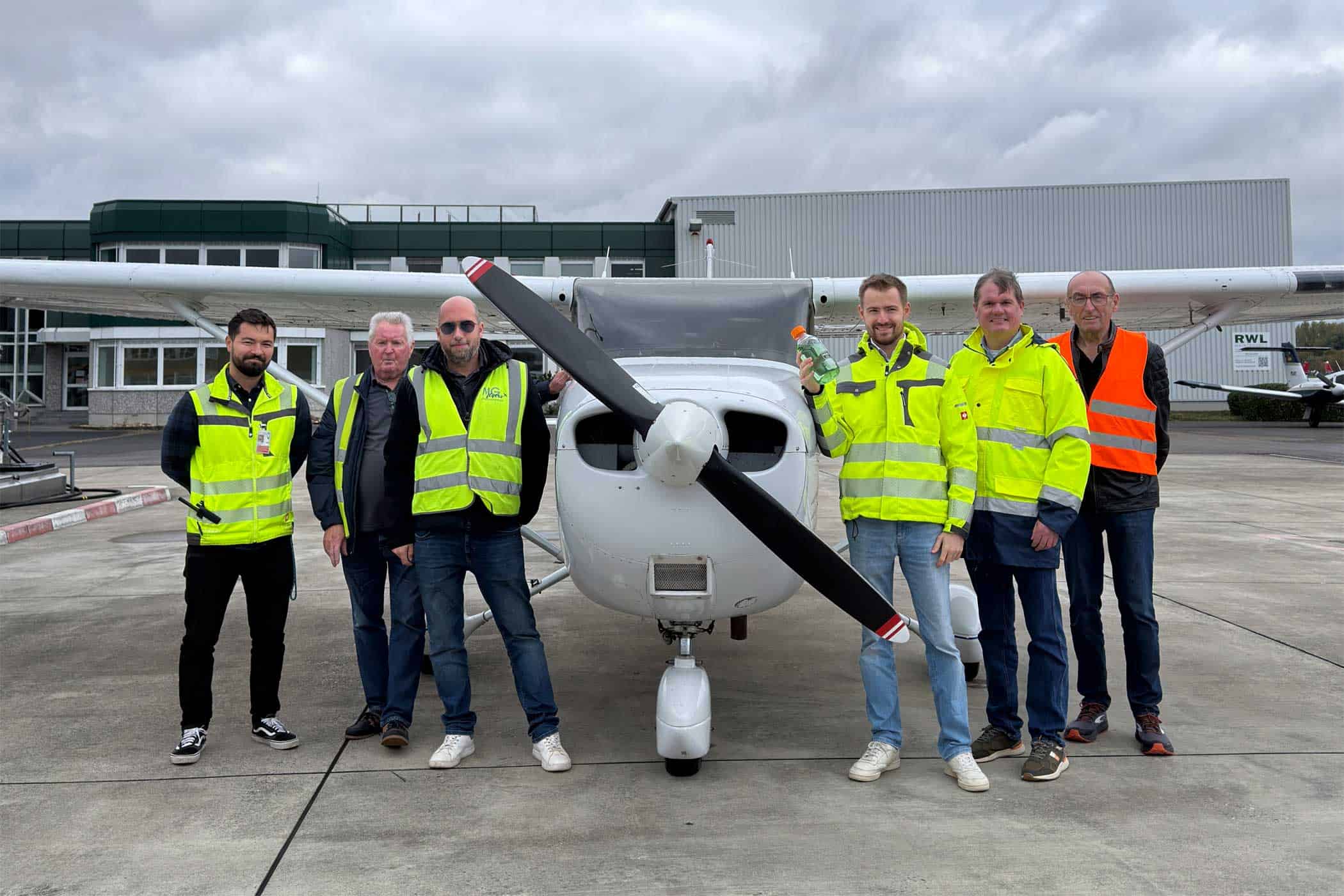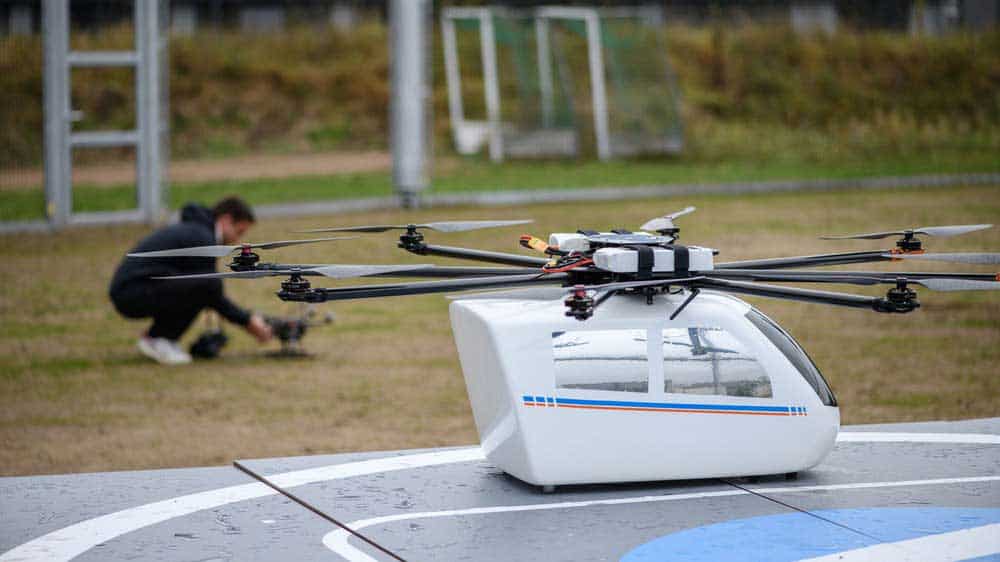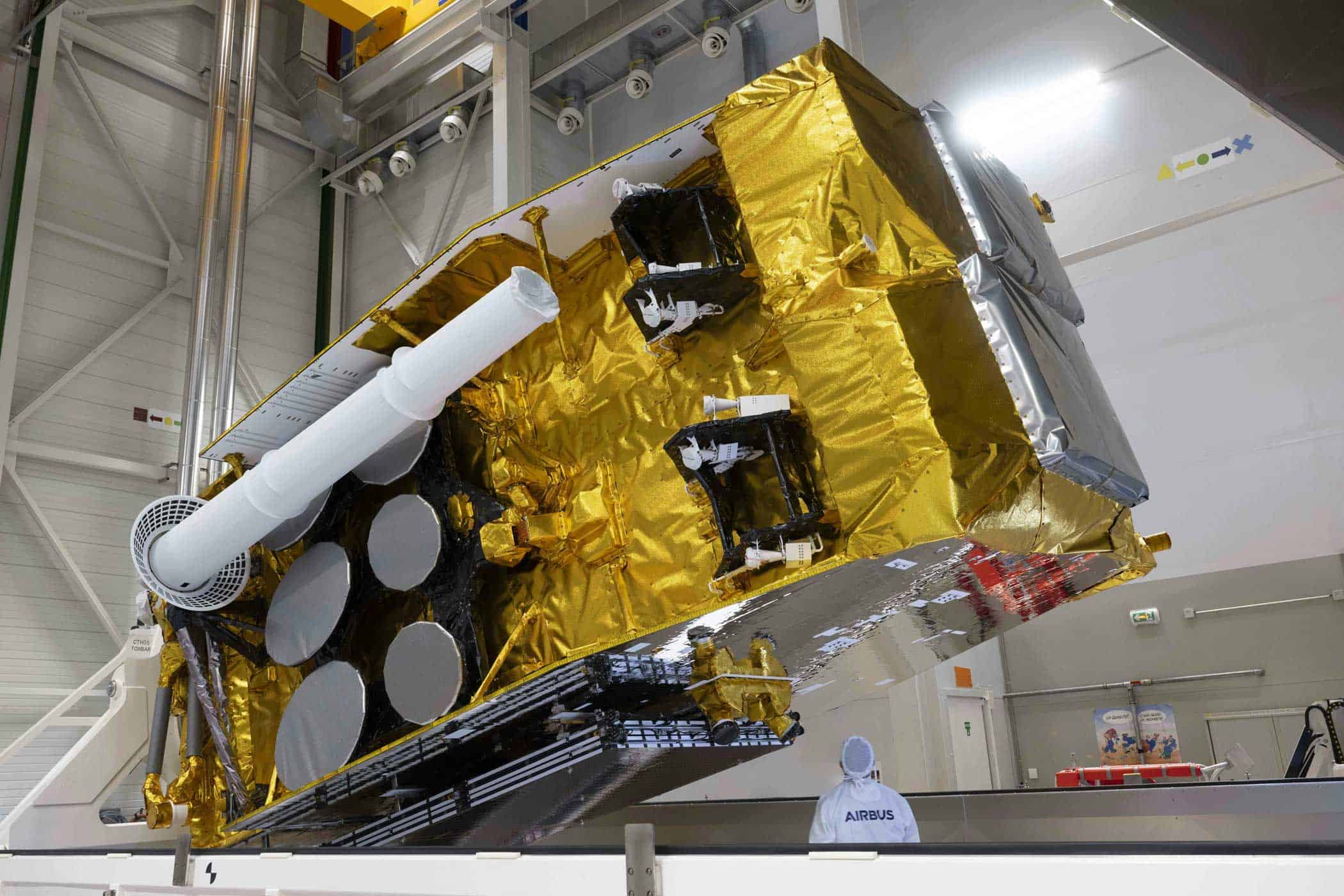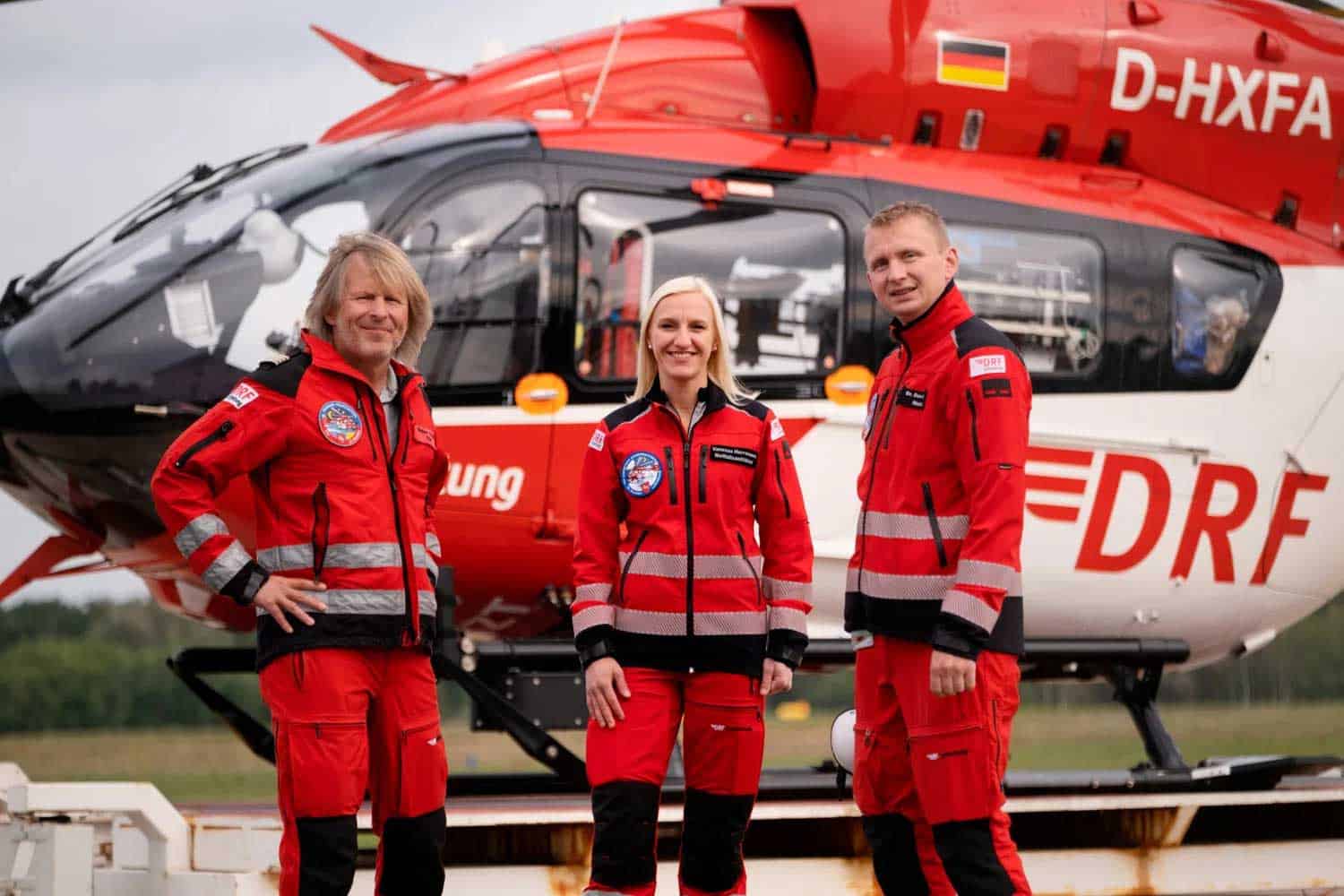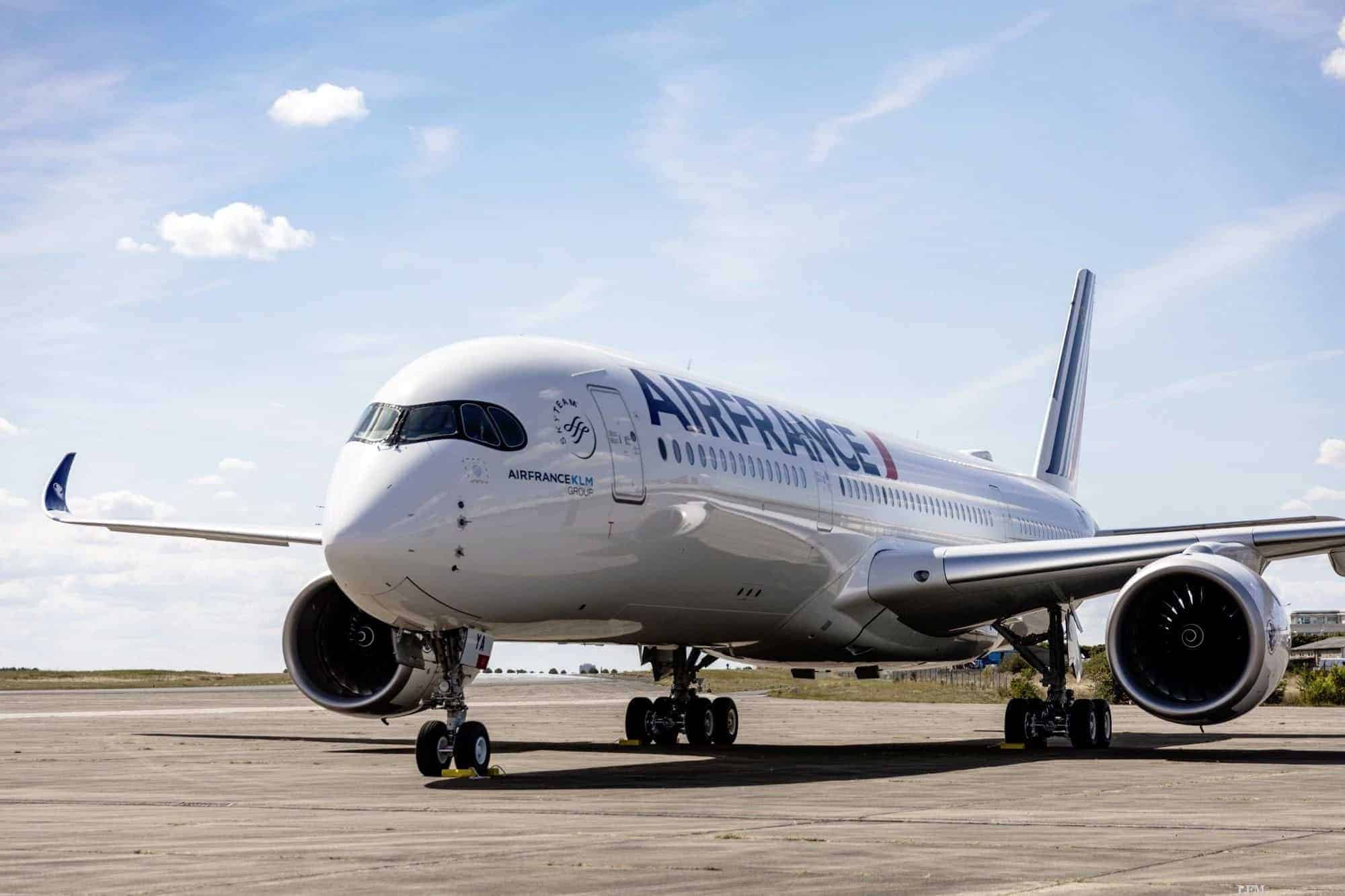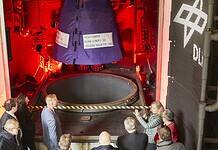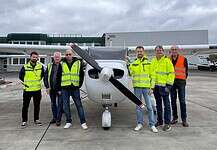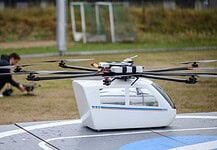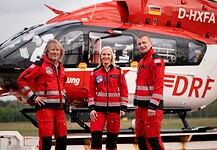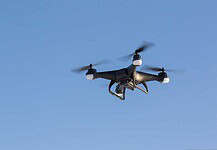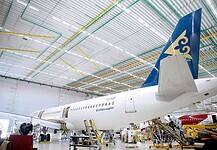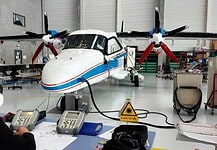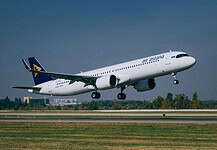This site is also available on:
Deutsch
In a world where international air traffic is constantly growing and technological innovations are increasingly setting the pace, airspace security plays a crucial role. German upper airspace – beginning at an altitude of approximately 7,500 meters – is one of the busiest traffic corridors in Europe. Countless international flight routes intersect here, controlled and monitored by the Upper Airspace Control Centre (UAC) of the German Air Traffic Control (DFS) in Karlsruhe.
The year 2024 marks a significant milestone at this critical hub: Frequentis AG, a global technology leader in the field of safety-critical communication and information systems, has completed a comprehensive upgrade of the existing voice communication system (VCS). This technological modernization not only ensures smooth operations until 2035, but also increases the safety, efficiency, and sustainability of air traffic communications beyond Germany.
This article examines in detail how Germany is using this technological advancement to prepare for the airspace of the future – through modern infrastructure, a proven partner network, and a clear vision for the future of air traffic control.
Background: UAC Karlsruhe and a strong partnership
What is the UAC Karlsruhe?
The UAC (Upper Area Control Centre) Karlsruhe is one of four control centers of the German Air Traffic Control (DFS) and is responsible for the so-called upper airspace over Germany. This begins at an altitude of 7,500 meters and primarily encompasses international transit air traffic at high altitudes. Unlike arrival and departure control centers, Karlsruhe does not coordinate takeoff and landing operations, but rather ensures safe and efficient routing over German territory.
The complexity of this task is underscored by weather-related flight schedule changes, restricted areas, military airspace, and the high flight frequency. To meet all these requirements, a high-performance and fail-safe communications infrastructure is essential.
35 years of successful cooperation: Frequentis & DFS
The 2024 modernization is not the first project Frequentis has implemented for DFS. In fact, the two organizations have been working closely together for over 35 years. Frequentis has always delivered robust solutions in the areas of voice communications, surveillance systems, and air traffic management (ATM).
A key foundation for this successful collaboration from the outset was the shared understanding of safety as the highest priority. Whether introducing new technologies or maintaining existing systems, Frequentis has consistently demonstrated its ability to provide state-of-the-art solutions safely, efficiently, and in close coordination with DFS’s operational processes.
Details of the 2024 upgrade project
Introduction of VCS3020X: The Technical Basis The VCS3020X platform from Frequentis was introduced at the UAC Karlsruhe in 2017. This innovative communications platform was specifically developed to meet the high safety and efficiency requirements of air traffic control. It enables VoIP-based voice communication (Voice over IP) for air traffic controllers, air traffic controllers, and operational service units.
With the 2024 upgrade, the platform enters a new phase: hardware, software and security architecture have been completely modernized to keep pace with the increasing demands of the aviation industry.
Key components of the upgrade
Hardware upgrade: All 150 workstations in the main and backup systems were equipped with state-of-the-art hardware. More powerful processors, faster network interfaces, and optimized audio processing significantly increased efficiency and user-friendliness.
Impact on operations until 2035
The VCS upgrade represents more than just a technological innovation—it is a central building block for DFS’s strategic direction. The goal is to ensure reliable operations beyond the next ten years while simultaneously creating room for future developments.
Improving operational performance
The new infrastructure will significantly improve operations at UAC Karlsruhe. Communication between different control centers is seamless, failure scenarios can be better mitigated, and sources of error in the communication flow have been minimized.
The system’s simultaneous availability for 150 workstations ensures enormous reliability during peak times. The new role model allows for cross-center management of different airspace sections – an important step toward greater flexibility in future air traffic management.
Ensuring consistent communication
Thanks to the SIP protocol, voice communication is now state-of-the-art. The direct connection of Voice over IP components not only offers better voice quality but also increases redundancy through modular network structures.
Resilience through security
In times of increasing cyber risks, digital security is essential. DFS emphasizes that the new system, with its modern architecture, is significantly more robust against attacks from cyberspace – while simultaneously being open to further technological connections.
Voices from practice
Alexander Reith, Head of Radio and Voice Communication Services at DFS, emphasizes: “Frequentis has once again proven itself to be a reliable partner in supporting DFS’s safety-critical tasks. With the modernized VCS at the UAC Karlsruhe, we are equipped for today’s operational requirements and able to tackle future challenges with confidence.”
Reinhard Grimm, Executive Vice President ATM at Frequentis, added: “Frequentis is proud to contribute to the continued success of DFS and to support its mission of enabling safe, efficient, and sustainable management of airspace over Germany and beyond.”
These quotations underline that the project is not only a technological but also a strategic signal in terms of responsibility, quality and partnership.
Classification in technological aviation trends
With this project, DFS and Frequentis are positioning themselves not only as modern providers, but also as active shapers of the European ATM future. Topics such as virtualization, IP-based communication, system integration, and cybersecurity are central components of all modern ATM initiatives at the European and international levels, especially in projects such as SESAR (Single European Sky ATM Research).
Digitalization as a cornerstone
The gradual replacement of traditional hardware with virtualized platforms is a long-term industry trend. Virtualized control centers, software-defined networks, and adaptive communication architectures are key areas in air traffic control. The new VCS in Karlsruhe confirms that Germany is actively supporting and implementing this trend.
Sustainable air traffic requires modern communication
Sustainability and efficiency are no longer separable today. Systems that minimize outages, enable flexible routes, and process digital data more quickly contribute directly to reducing emissions in airspace management. The upgrade also indirectly supports this goal.
Conclusion and outlook
Frequentis’ upgrade of the voice communication system at UAC Karlsruhe is far more than just a technical update. It’s a strategic step toward future-proof air traffic control. The modernized VCS3020X system not only achieves modern technological standards but also strengthens supra-regional factors such as safety, interoperability, efficiency, and environmental friendliness.
With this upgrade, DFS demonstrates that it is capable of meeting both current and future requirements – and with a strong partner at its side. The cooperation with Frequentis is a prime example of sustainable, quality-oriented technological implementation in safety-critical airspace.
When it comes to preparing Germany for the future of airspace, Karlsruhe is once again sending a clear signal: innovation, safety and partnership go hand in hand at flight level.

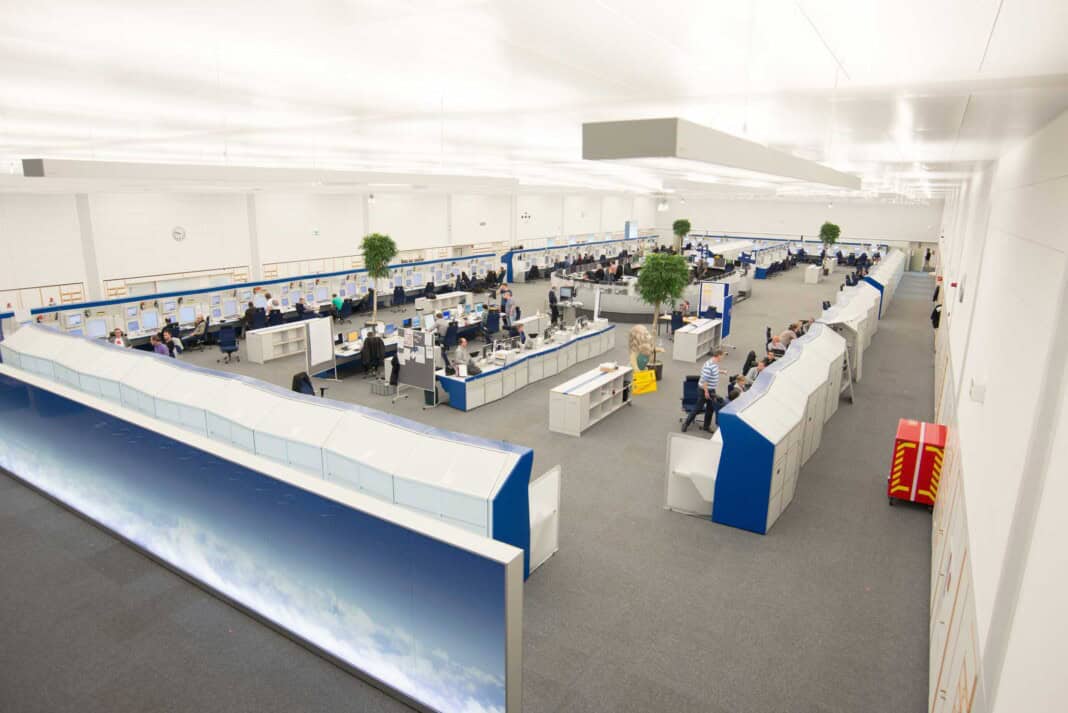
 Munich Airport ready for winter service (Munich Airport ready for winter service)
Munich Airport ready for winter service (Munich Airport ready for winter service)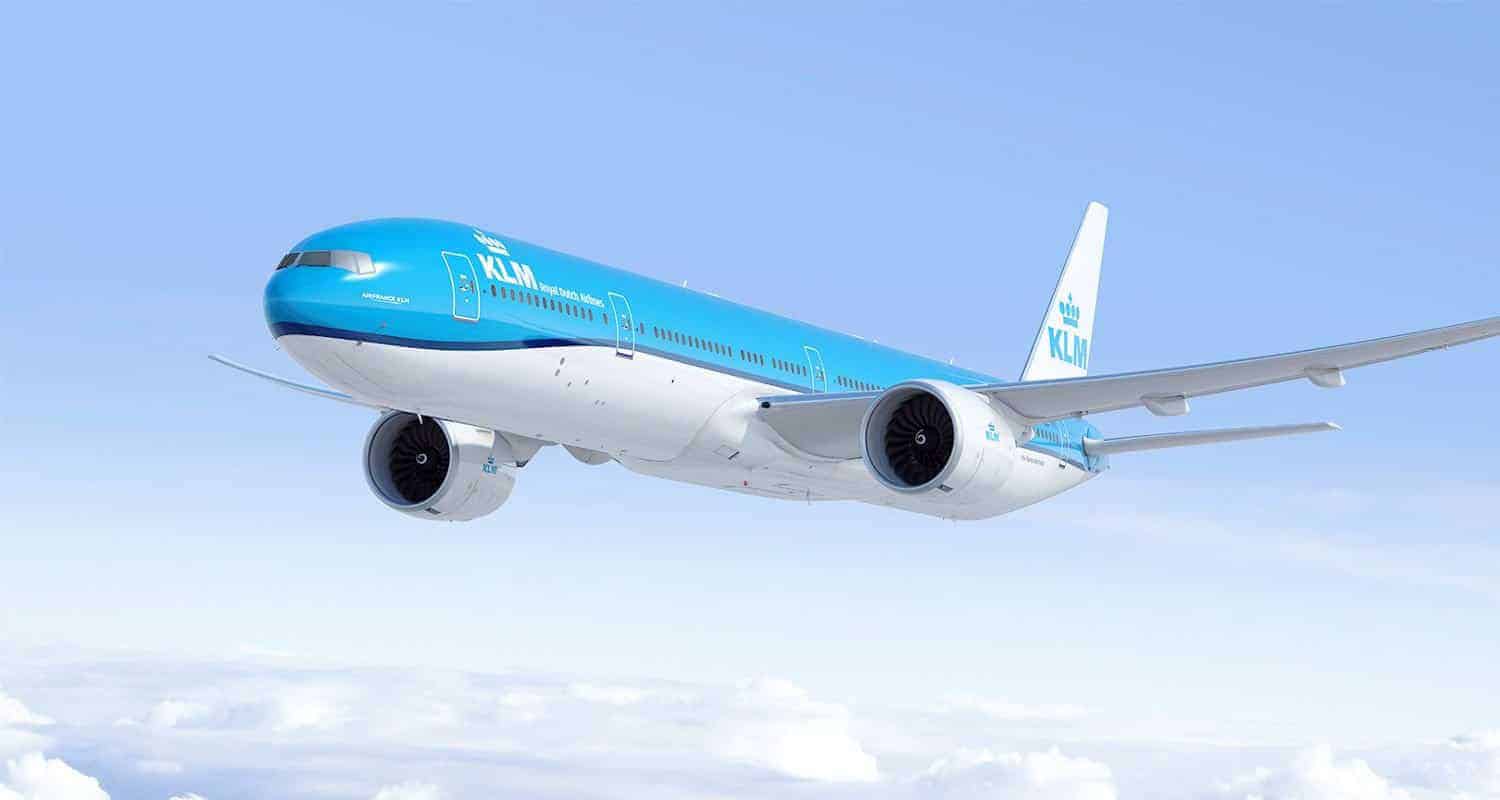 KLM integrates safer luggage tracking via Apple AirTag (KLM integrates safer luggage tracking via Apple AirTag)
KLM integrates safer luggage tracking via Apple AirTag (KLM integrates safer luggage tracking via Apple AirTag)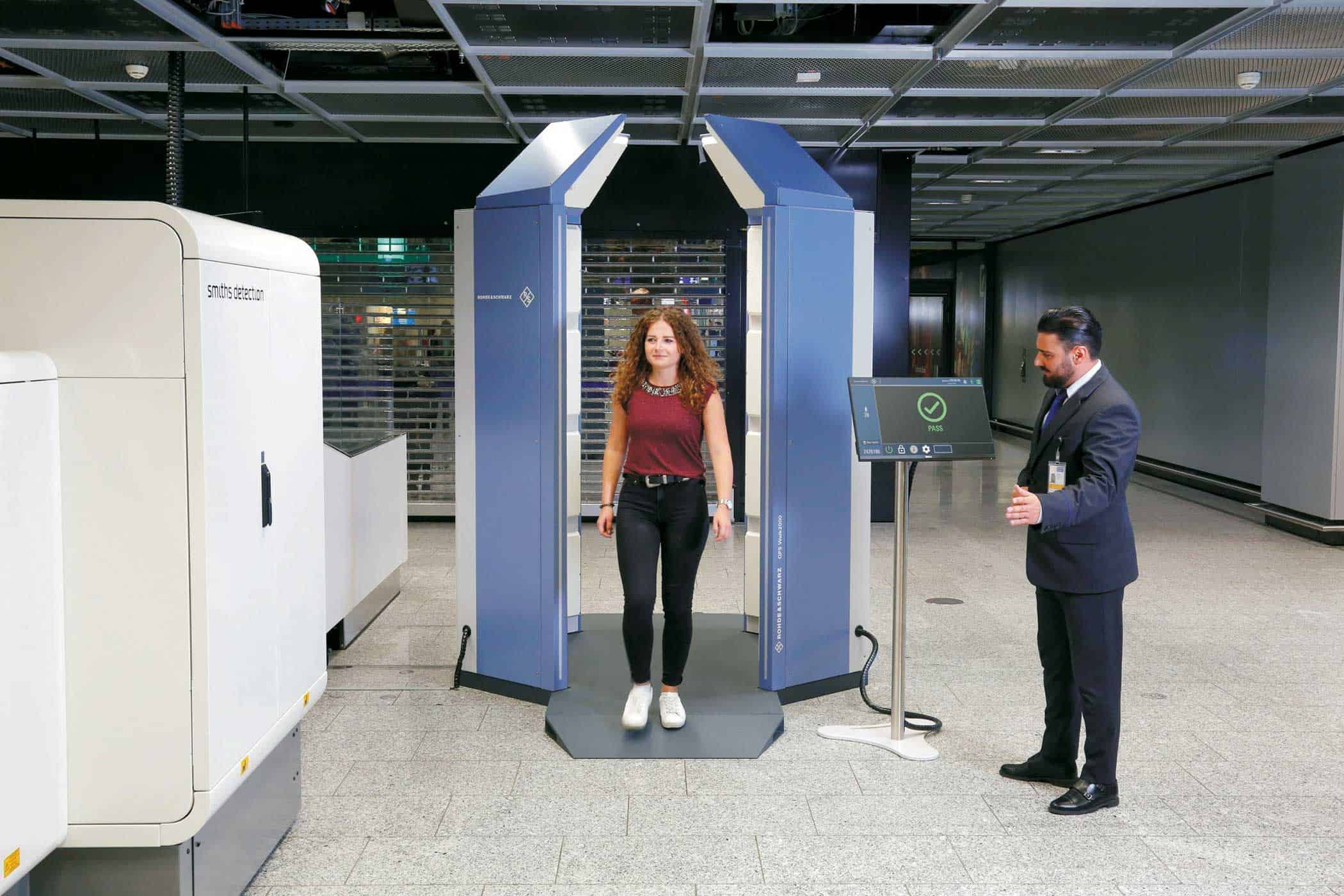 Fraport uses walk-through scanners for security checks (Fraport uses walk-through scanners for security checks)
Fraport uses walk-through scanners for security checks (Fraport uses walk-through scanners for security checks)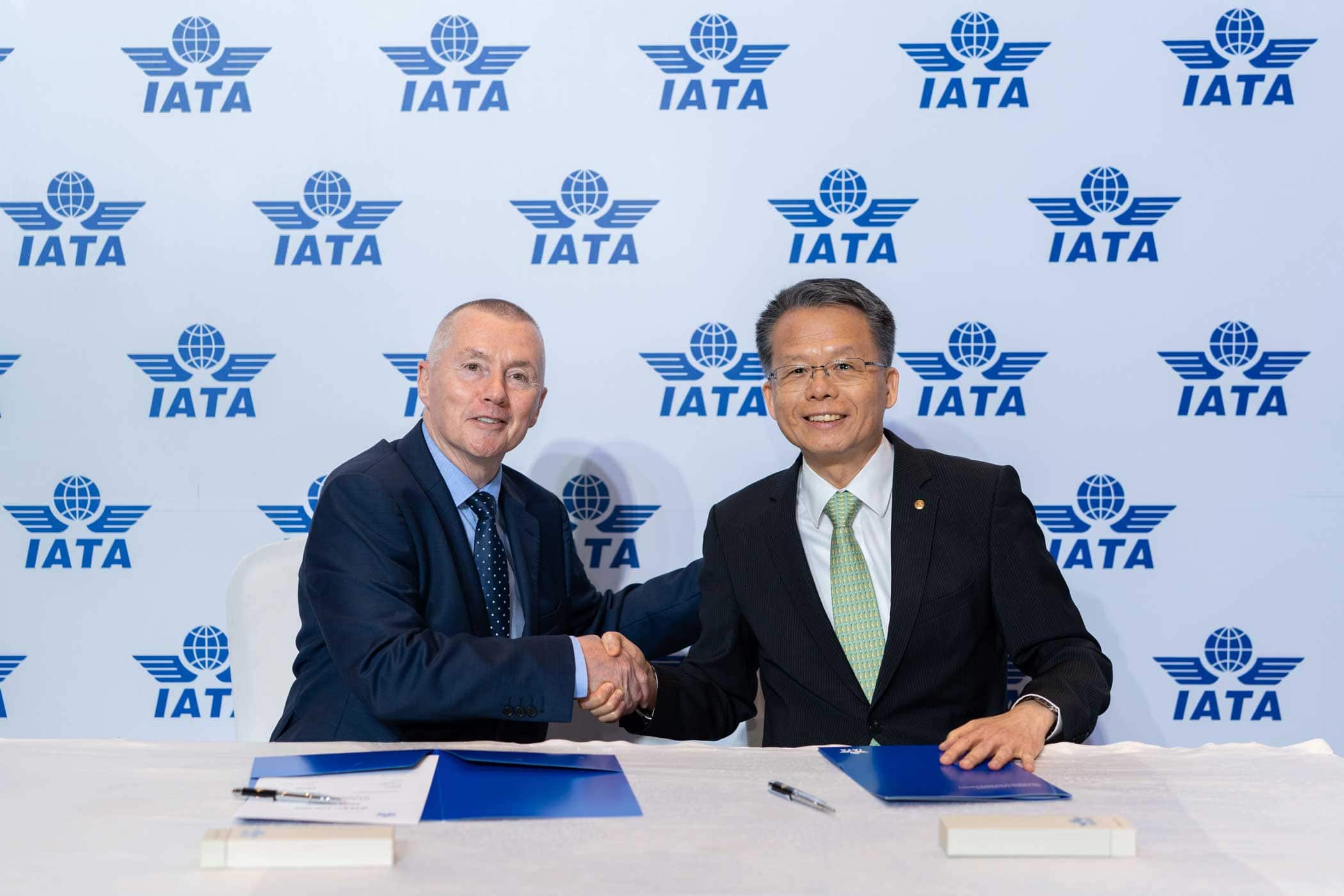 Flight safety: EVA AIR joins IATA Turbulence Aware platform (Flight safety: EVA AIR joins IATA Turbulence Aware platform)
Flight safety: EVA AIR joins IATA Turbulence Aware platform (Flight safety: EVA AIR joins IATA Turbulence Aware platform)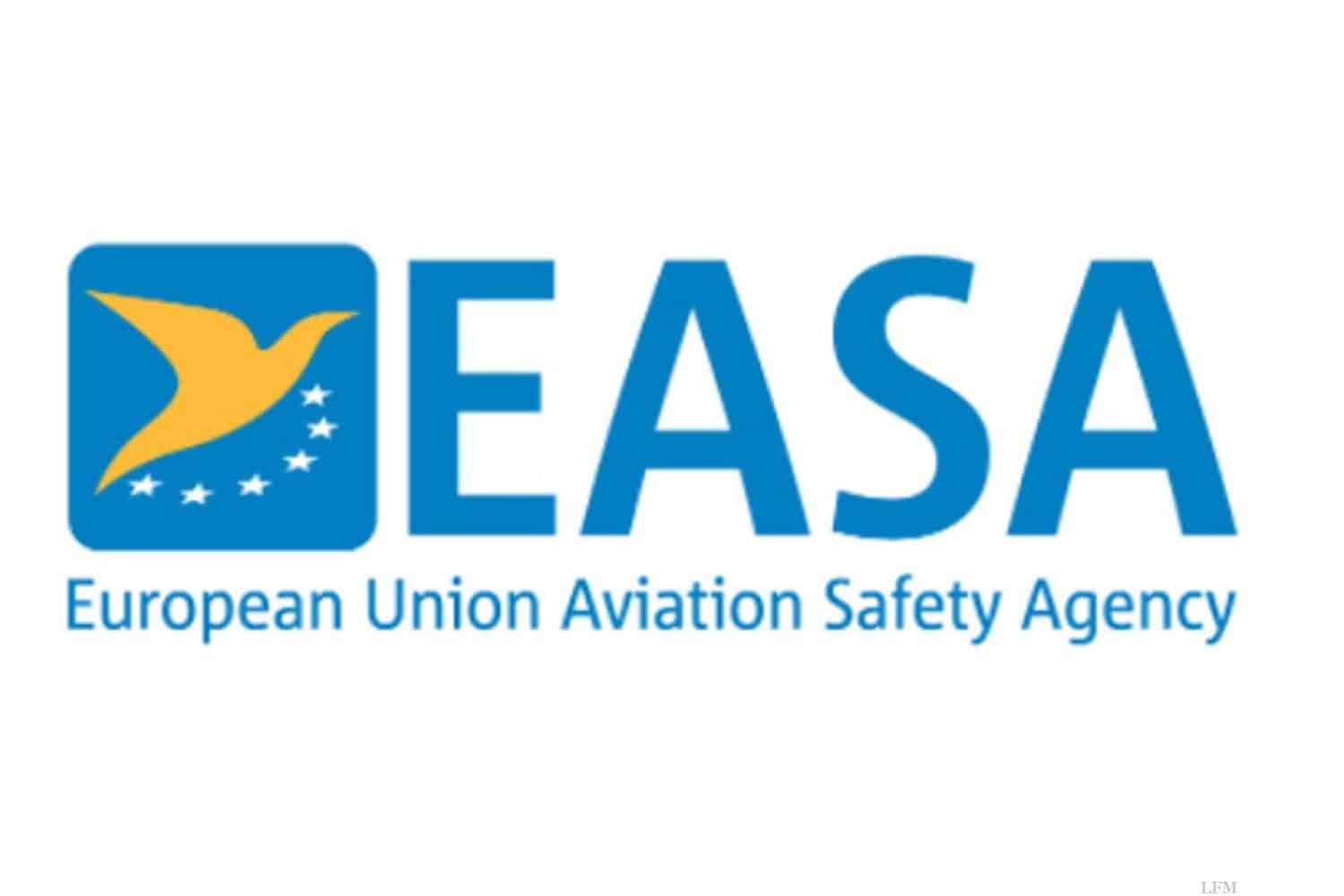 EASA: New safety regulations for ground handling (EASA: New safety regulations for ground handling)
EASA: New safety regulations for ground handling (EASA: New safety regulations for ground handling)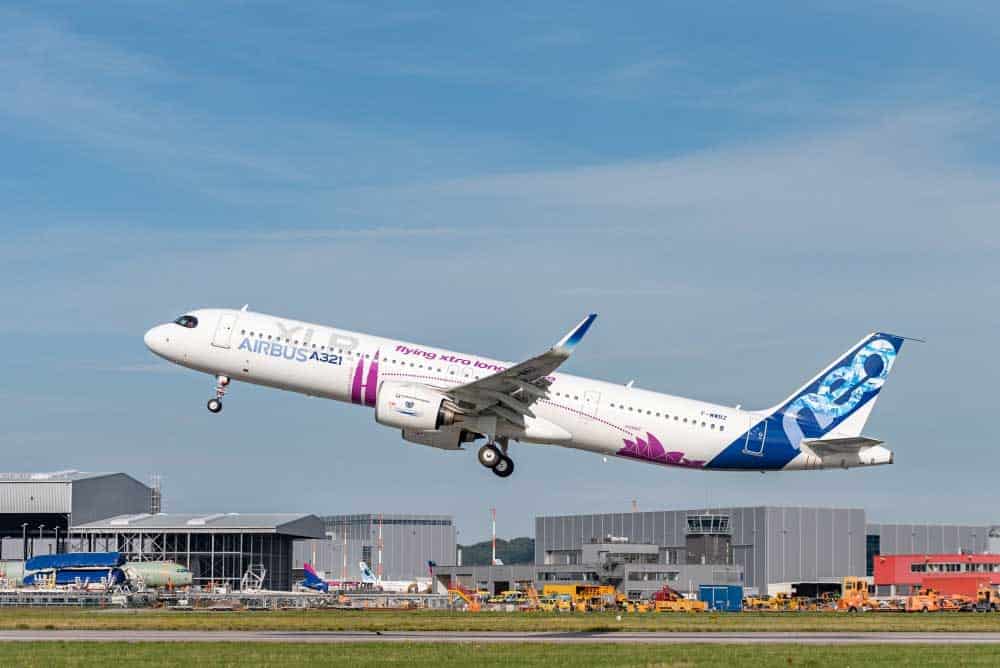 EASA approves Airbus A321XLR with GTF engines (EASA approves Airbus A321XLR with GTF engines)
EASA approves Airbus A321XLR with GTF engines (EASA approves Airbus A321XLR with GTF engines)